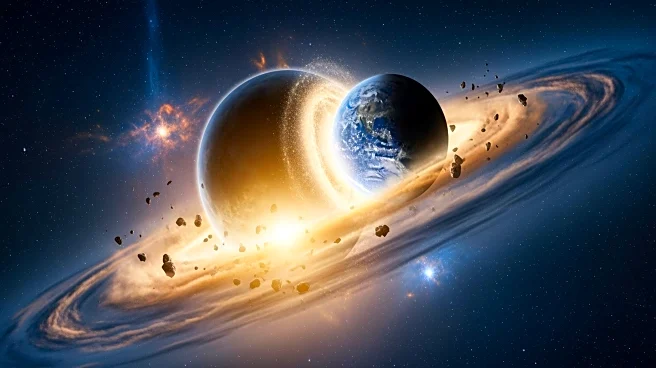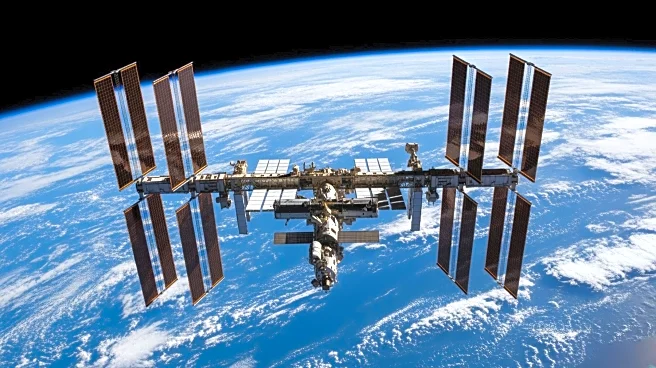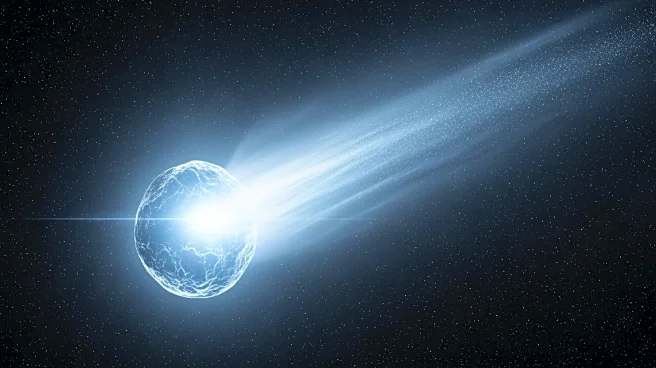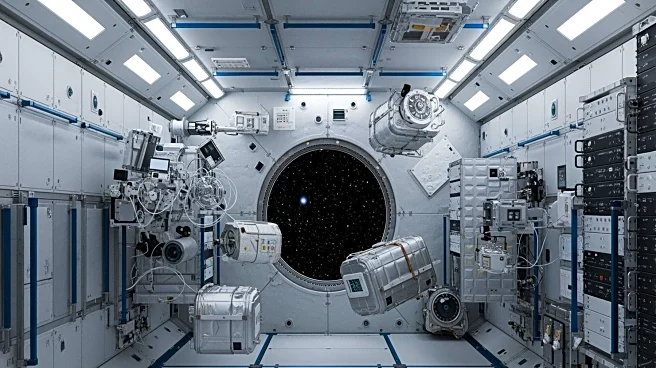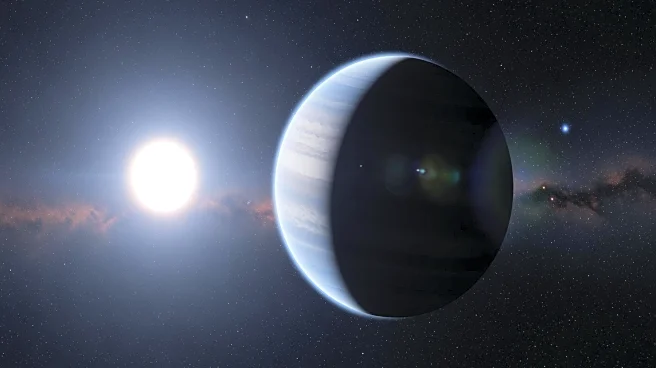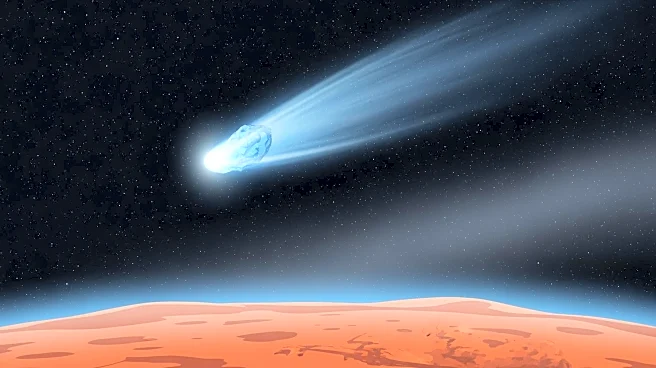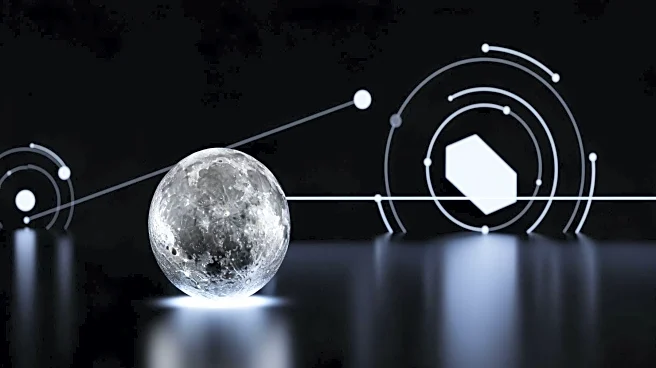What's Happening?
Researchers have traced the origins of Theia, the Mars-sized body that collided with proto-Earth 4.5 billion years ago, leading to the formation of the Moon. Theia is believed to have originated in the inner
Solar System, possibly closer to the Sun than Earth. The study, led by the Max Planck Institute for Solar System Research and the University of Chicago, analyzed isotopic ratios in samples from Earth, the Moon, and meteorites to determine Theia's composition and origin. The findings suggest that Theia and proto-Earth were neighbors, with Theia contributing significant amounts of iron to Earth's mantle.
Why It's Important?
Understanding the origins of Theia provides insights into the early dynamics of the Solar System and the processes that led to the formation of the Moon. The study of isotopic ratios offers clues about the distribution of materials in the protoplanetary disk and the interactions between celestial bodies. The research enhances our knowledge of planetary formation and the conditions that shaped the early Solar System, contributing to broader theories about the evolution of planets and moons.
What's Next?
Further research will focus on refining models of planetary formation and the interactions between celestial bodies in the early Solar System. The study of isotopic ratios will continue to provide valuable data on the composition and origins of planets and moons. Scientists will explore the implications of Theia's collision with proto-Earth, examining how such events influence planetary development and the formation of satellite bodies. The findings may inform future missions and studies aimed at understanding the history and evolution of the Solar System.
Beyond the Headlines
The study of Theia's origins challenges scientists to consider the broader implications of planetary formation and the dynamics of the early Solar System. The research highlights the importance of isotopic analysis in tracing the history of celestial bodies and understanding their interactions. The findings contribute to ongoing discussions about the processes that shape planets and moons, offering insights into the complex and interconnected nature of the universe. The study also underscores the significance of collaboration and innovation in advancing our understanding of space.
